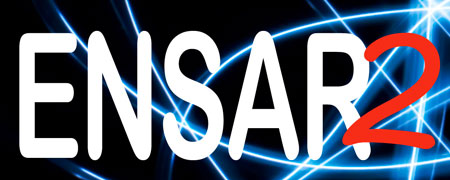ENSAR2, representing the communities of Nuclear Physics and Applications of Nuclear Science, identifies 10 facilities
of prime interest for HORIZON2020.
ENSAR2 world-class facilities are prominent with regard to:
- Accelerator specifications. These facilities provide stable and radioactive ion beams of excellent qualities ranging in energies from tens of keV/u to a few GeV/u. The stable-ion beams range from protons to uranium. Radioactive ion beams are produced using the two complementary methods of In-Flight Fragmentation (IFF) and Isotope Separation On-Line (ISOL), so that several hundred isotopes are available for the user as beams.
- Available instrumentation. These include a variety of ancillary equipment to detect gamma rays, neutrons and light and heavy ions. Unique detectors include arrays of scintillators, solid-state detectors and magnetic spectrometers, etc.
Of course, most paramount is the interest of the user communities in being offered access. These facilities belong to the European Network of Complementary Large-scale Facilities which is supported by NuPECC. The facilities are monitored by the community via NuPECC. Certain experimental proposals use the same unique equipment at different facilities to take advantage of the complementarity in available beams and energies. These equipment are constructed to be moved to different facilities.
EC rules for support from ENSAR2 Transnational Access:
see article 16 of the annotated Grant Agreement
Additional comment from B. Fabianek (EC Project Officer): Access for user groups with a minority of users not working in a EU or associated country is limited to 20% of the user group.
Review procedures for Transnational Access to experimental infrastructures
When a group of physicists submit a written proposal to conduct an experiment at an ENSAR2 infrastructure, the proposal is directed to the Programme Advisory Committee (PAC) of the infrastructure. The PACs consist of several experts from laboratories of the host country and of countries in Europe and outside Europe. The PACs meet approximately twice a year each to evaluate and rank proposals, and to make recommendations to the laboratory management.
In most infrastructures, all proposals for new experiments and continuations of experiments are presented by their spokespersons during the public session of these committees. During the closed session, the committee ranks the proposals in a secret-vote procedure and formulates written recommendations for the beam-time allocation sent to the spokesperson of each proposal. The evaluation process is based entirely on the criteria of scientific excellence and feasibility. The evaluation can also be performed remotely by PAC members. Following or simultaneously with the PAC meeting, a Selection Panel comprising members of the PAC considers the request for TA support by proposed experiments which fulfil the TA criteria for support. However, the support for TA grant has to be asked at the submission of a scientific proposal. The following points should be stressed:
- The selection of international users who benefit from the TA support is based solely on the scientific merit of the proposals.
- All the experiments fulfilling TA criteria can benefit from the TA funds, with a special attention to new users and users from countries where such infrastructure is not available.
Beam times are typically one week and are allocated to the user group on the basis of the proposals approved by the PAC. The unit of access offered is beam hour. As a rule, outside users will be spending a few extra days per user on top of the experiment time, to set up the experiment and potentially perform a first analysis of the data. Contacts with local research groups can be established to have detailed information about beams and experimental facilities available at RIs. Access costs will be declared on the basis of unit cost, a unit cost being the total cost incurred to provide one hour of beam on target.

